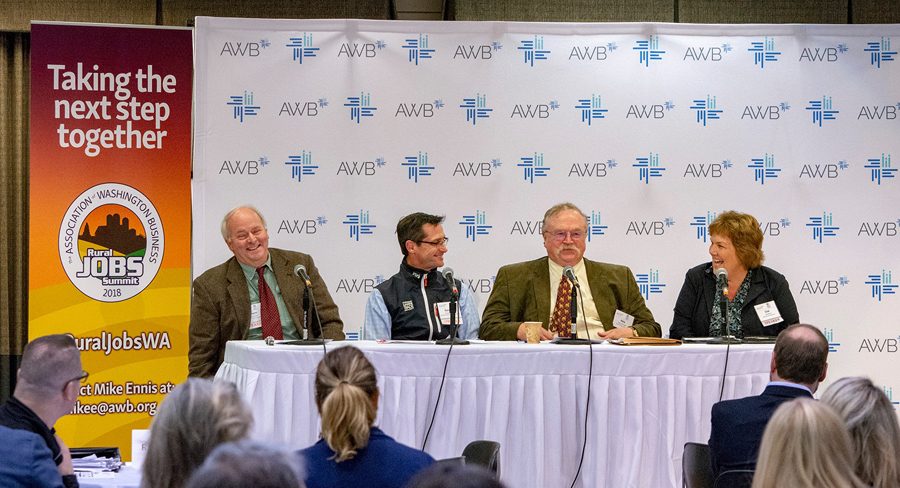
Home » Let’s work together to prioritize rural economic revitalization
Let’s work together to prioritize rural economic revitalization

December 13, 2018
By Kris Johnson
The mission of the Association of Washington Business is to bring people together throughout the state to promote economic prosperity — from the urban centers to the most rural corners.

We know that parts of Washington have boomed since the end of the recession, but others areas — particularly the rural communities that exist in each of our state’s 39 counties — have not realized the same economic opportunities.
This is apparent each month when the state issues new unemployment numbers by county, but it’s also evident by examining population statistics.
Except for Garfield County, every county in Washington has grown since 2000. The central Puget Sound grew dramatically — King County added more than 450,000 new people — but the entire state saw relatively healthy growth.
Since 2010, it’s a different story. While the urban areas continued growing during this time, population growth, while still occurring, slowed down in the rural areas. The lion’s share of rural Washington’s growth over the last two decades occurred before the start of the Great Recession.
What can we do to encourage growth in rural Washington? That’s the question we first asked last year when AWB hosted the first Rural Jobs Summit in Olympia and the second in the fall in Moses Lake.
On Nov. 8-9, we hosted the third Rural Jobs Summit at Lower Columbia College in Longview.
As a bipartisan and diverse group of legislators, business owners and local community leaders, we all agree we should celebrate the robust economy in urban centers – we want that. And, it perfectly reflects AWB’s mission. But we simply cannot afford to leave families in our rural parts behind.
The solutions to support economic revitalization are multipronged and we covered nearly all of them – from access to health care, child care and affordable housing to access to capital, high-speed broadband and support for our critical natural resource and agricultural sectors.
They all tie together.
We cannot talk about attracting businesses to rural areas without addressing access to high-speed broadband. Today’s businesses rely on that infrastructure to increase productivity and sales and to support innovation.
But, how do those communities attract the capital investment needed to build out that infrastructure, not to mention water, fuel and other operational necessities?
Businesses need a skilled workforce. But, to take those jobs, workers need access to affordable housing, child care and adequate health care, which is becoming increasingly challenging across the state.
One of the summit panelists, Steve Maher of the planning group Our Valley, Our Future, said a recent survey in the Wenatchee community showed that 45 percent of respondents thought about moving away from the community because of the cost of housing. “That’s a huge red flag for any community,” he said.
And, we cannot forget the impact federal decisions on trade are having on our agricultural communities. A recent report shows that just six months after trade policy changes, Washington farmers and other export-dependent producers saw foreign sales plummet between 20 percent and 28 percent. Cherry growers alone have lost $60 million to $80 million.
Our state’s overall success depends on not just talking about the many barriers holding back economic growth in rural regions but finding and implementing solutions discussed at the Rural Jobs Summit in the Legislature and at the local level to move every community forward.
Whether urban, rural or somewhere in between, we’re all in this together.
Kris Johnson is the president of the Association of Washington Business, the state’s chamber of commerce and designated manufacturing association.
Local News
KEYWORDS december 2018





